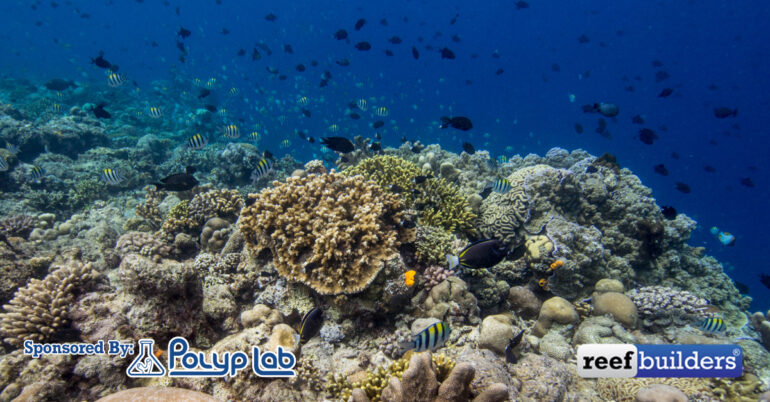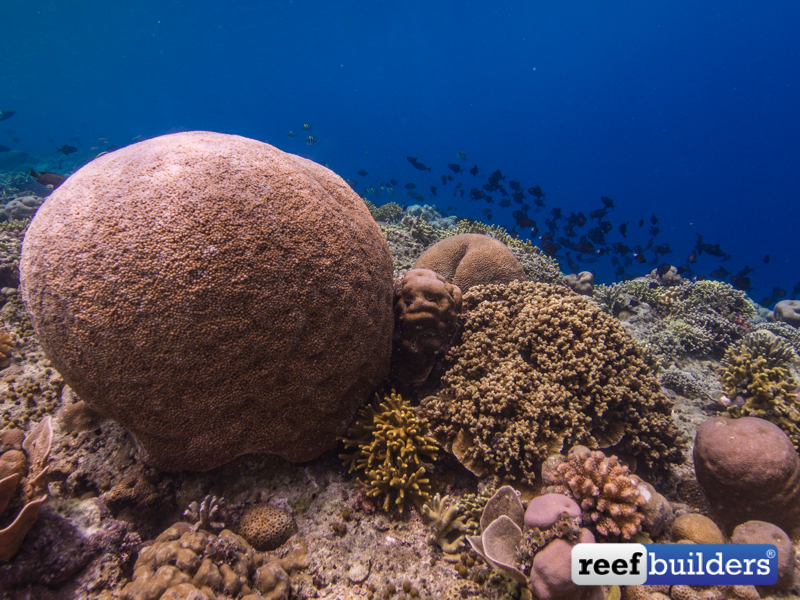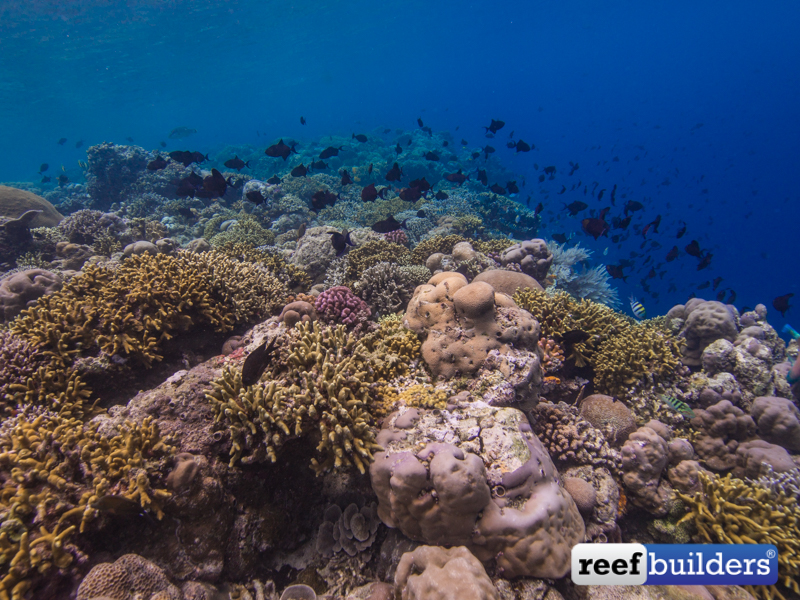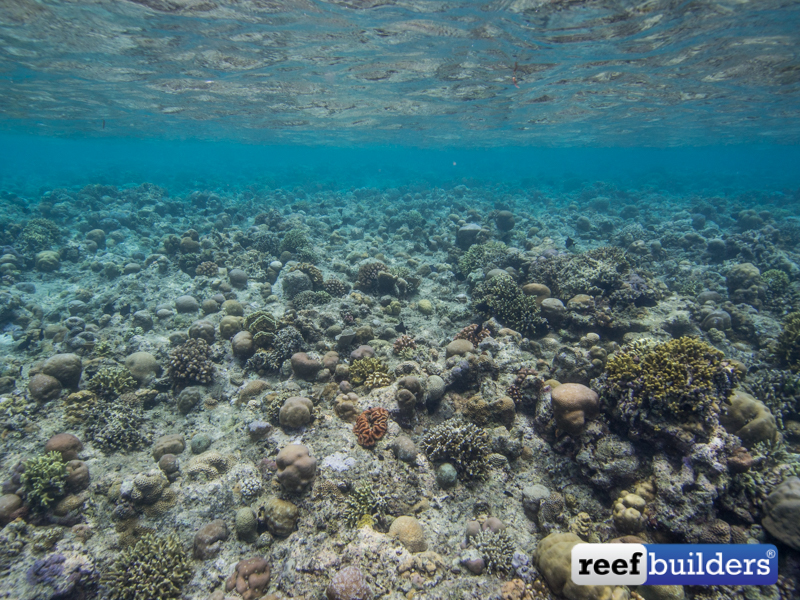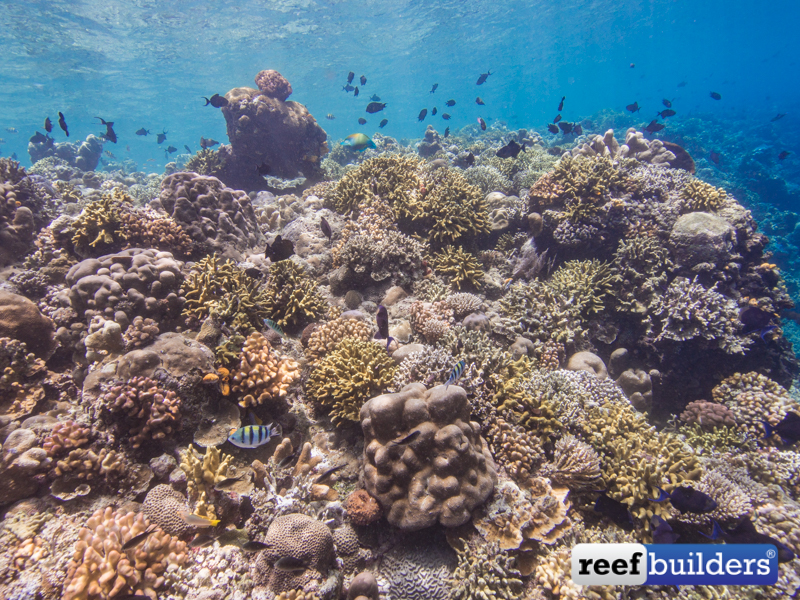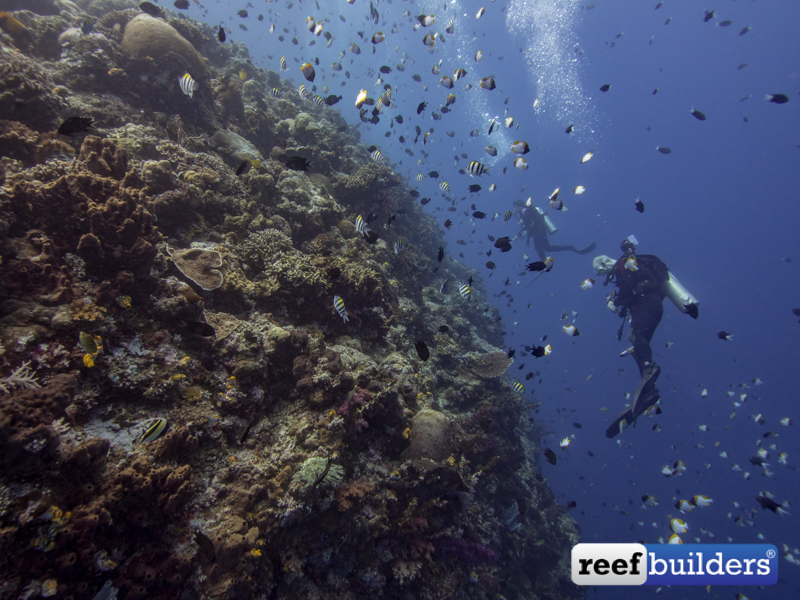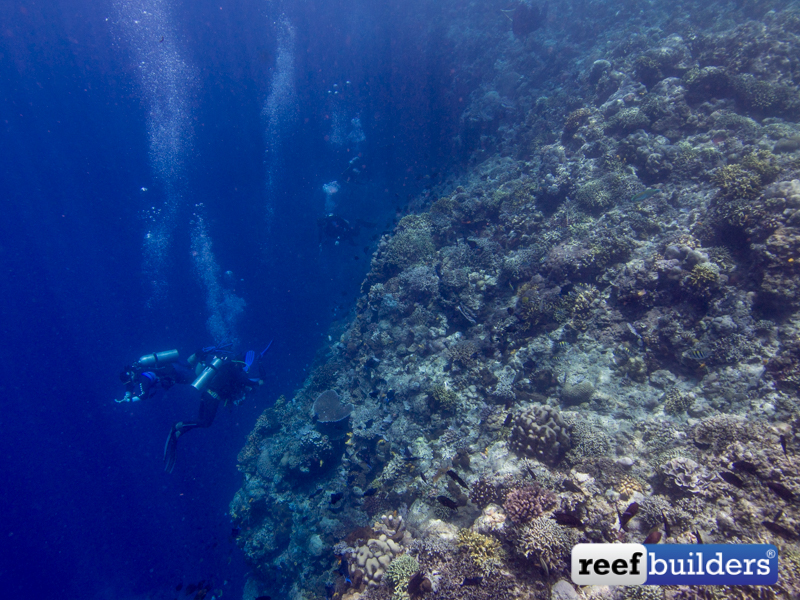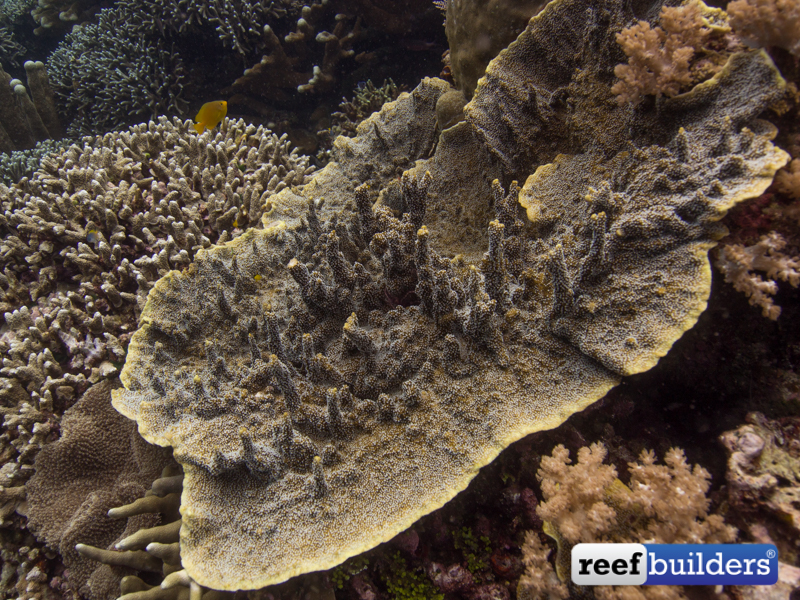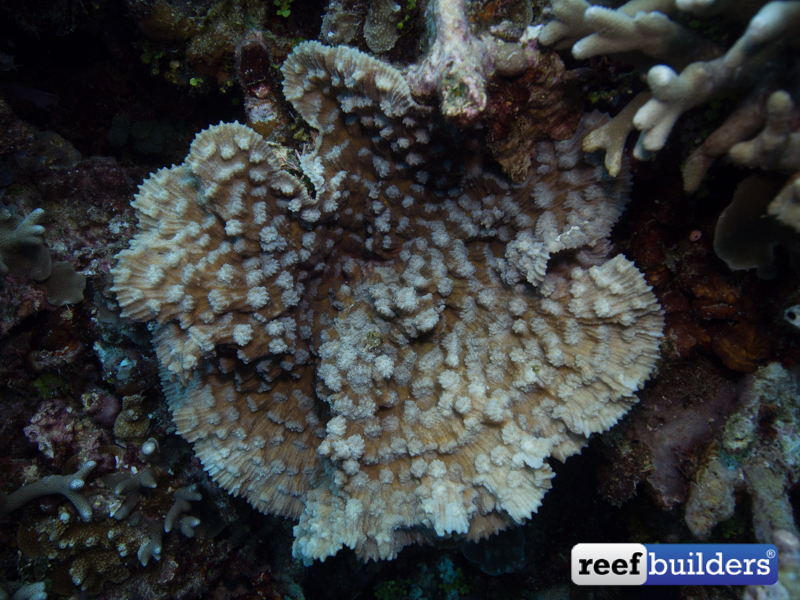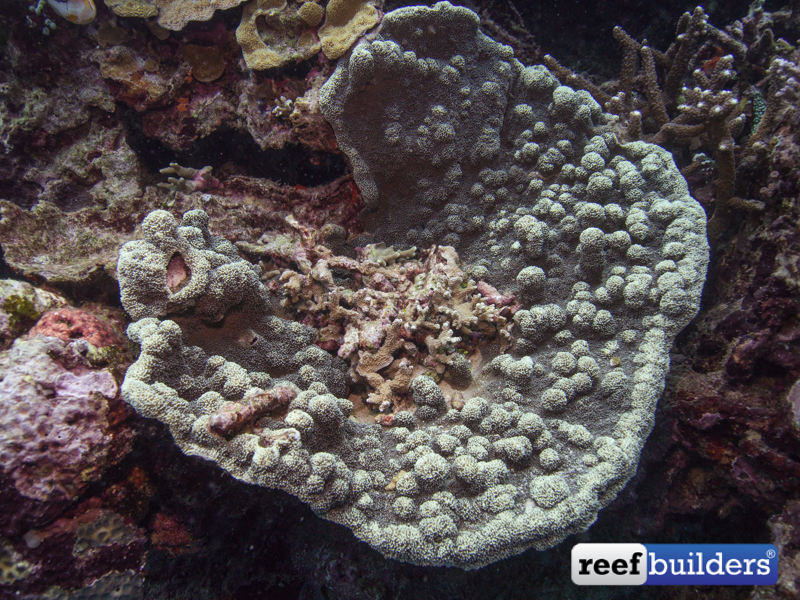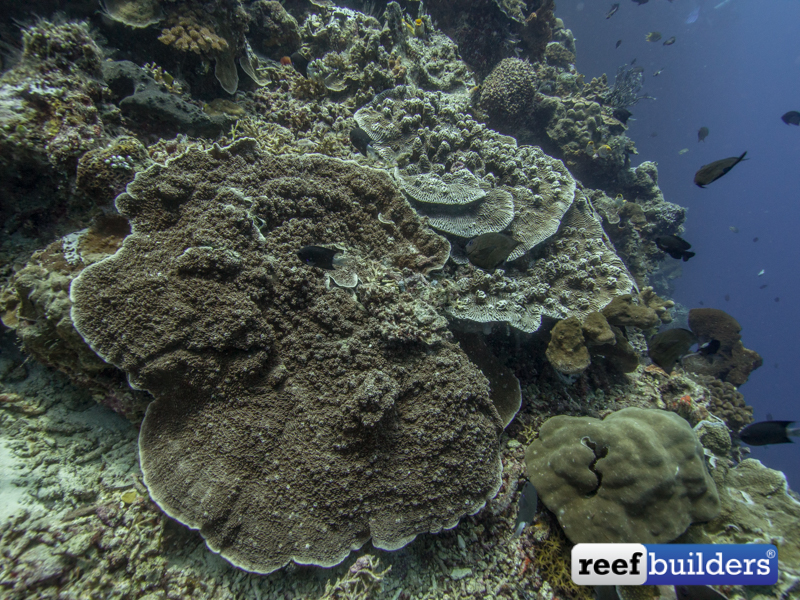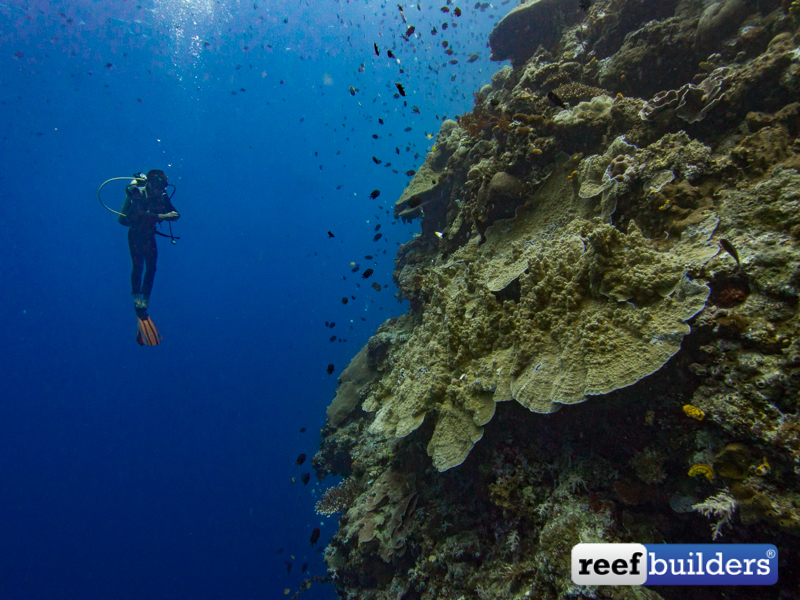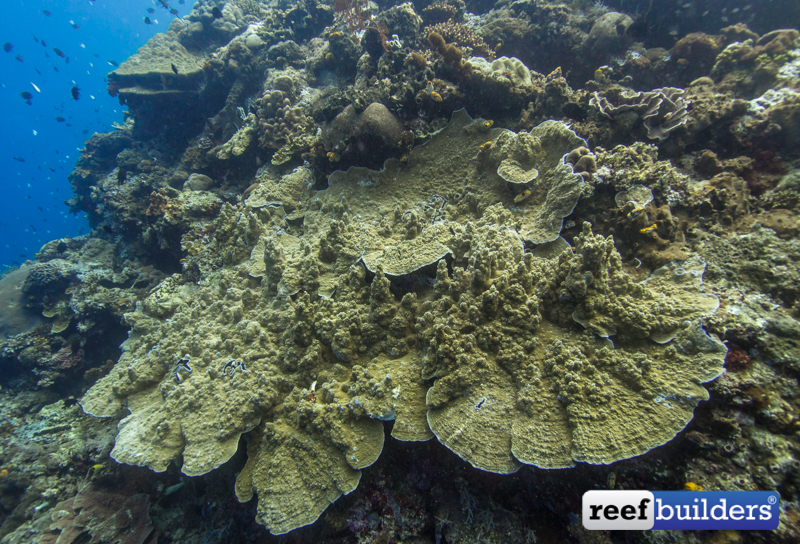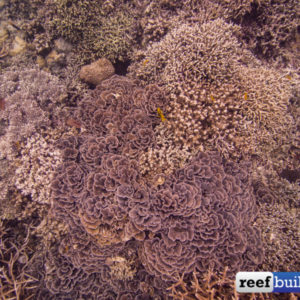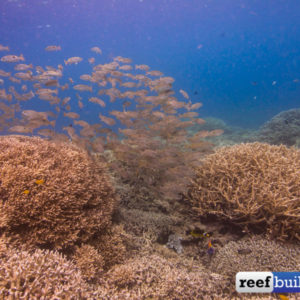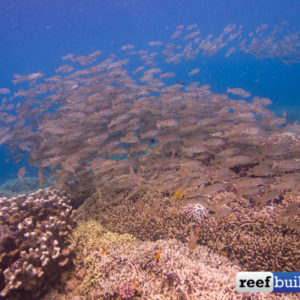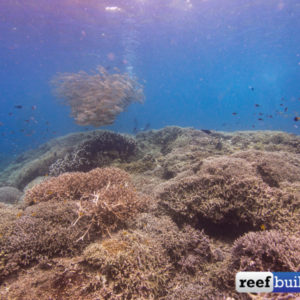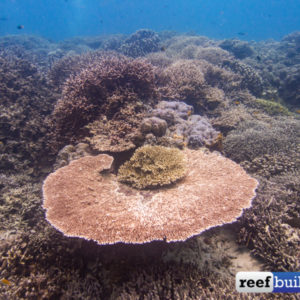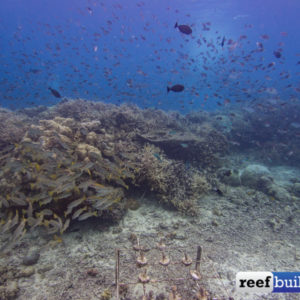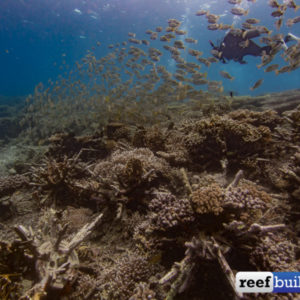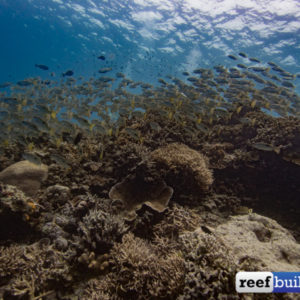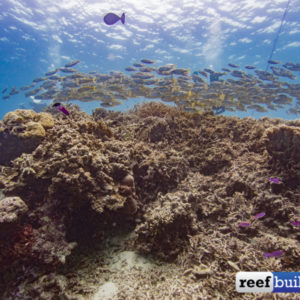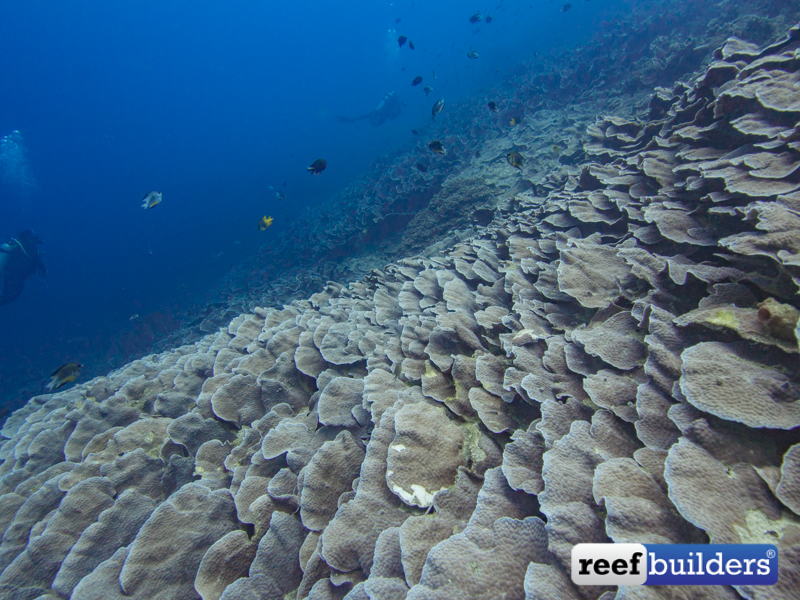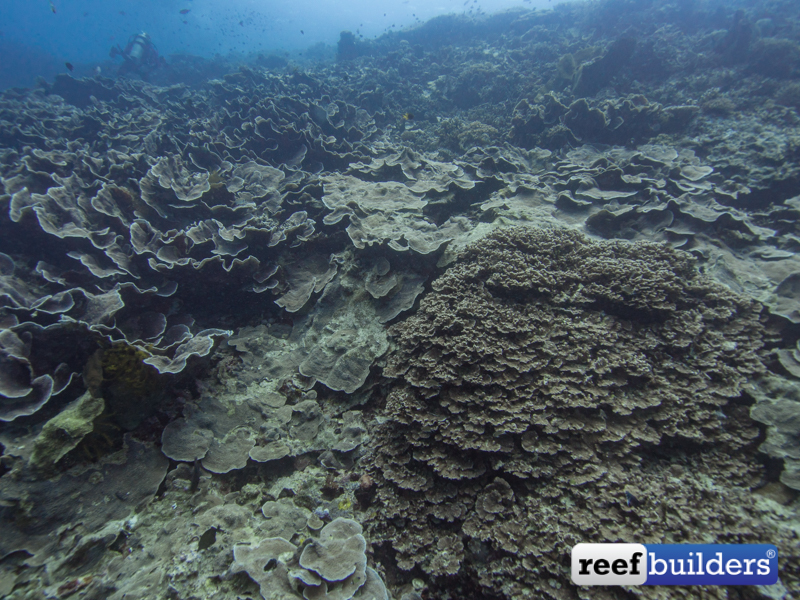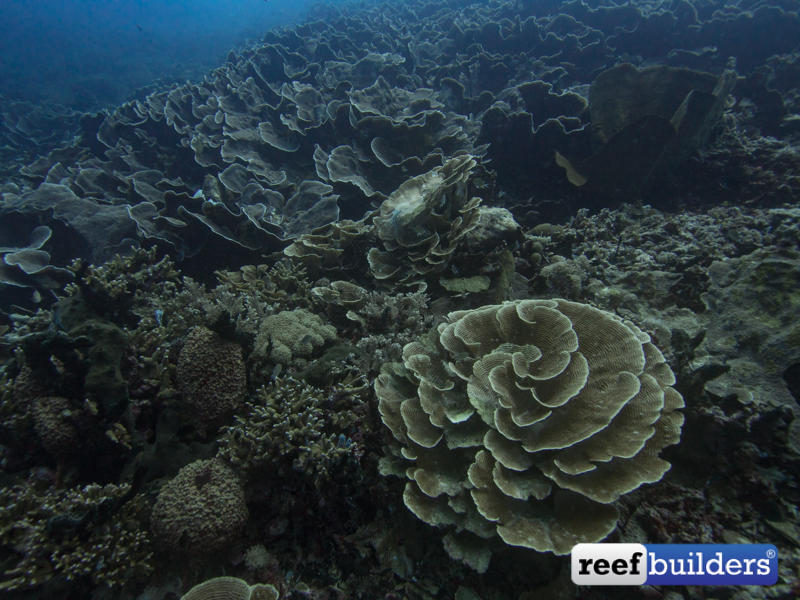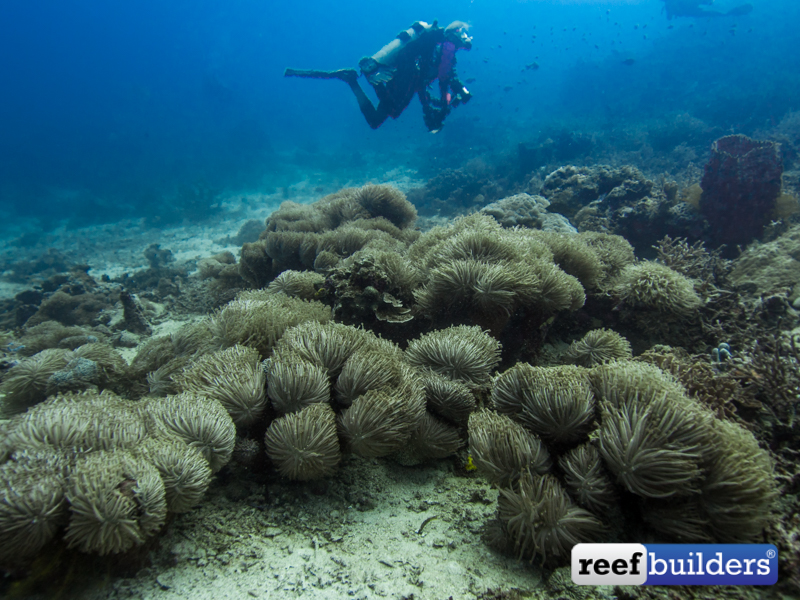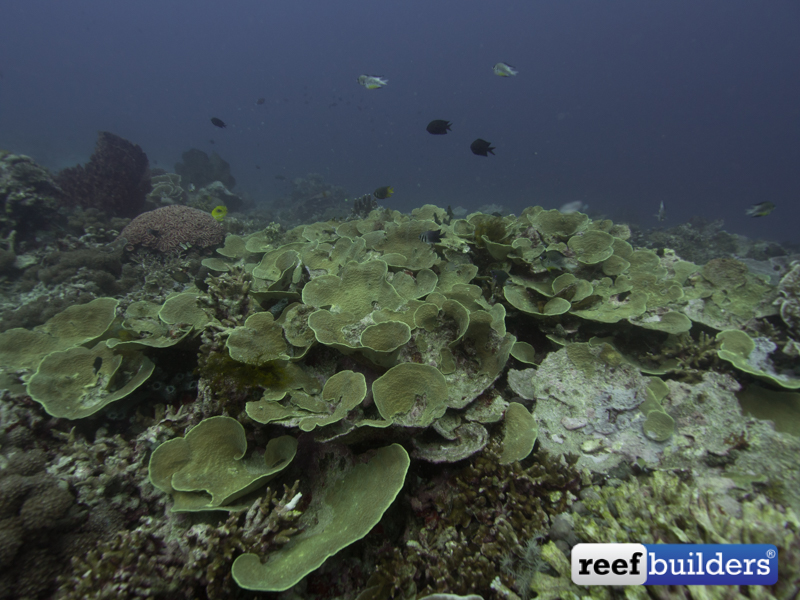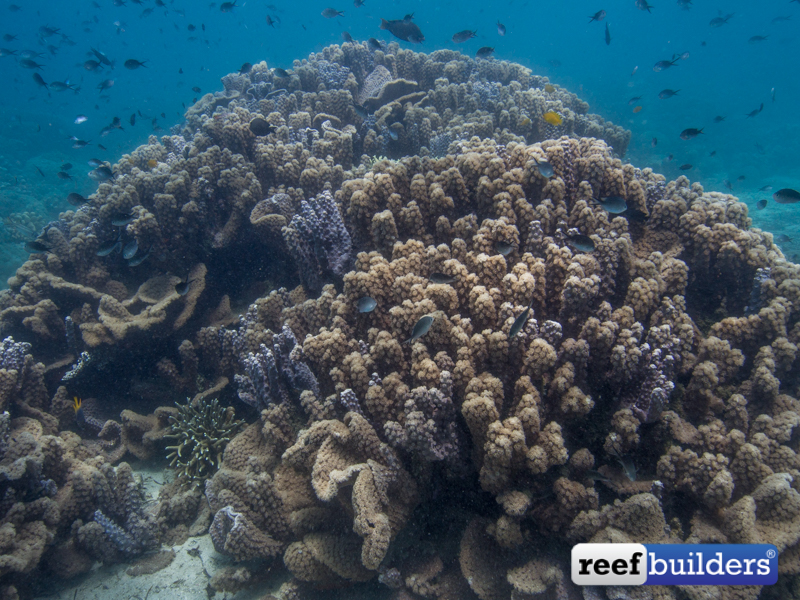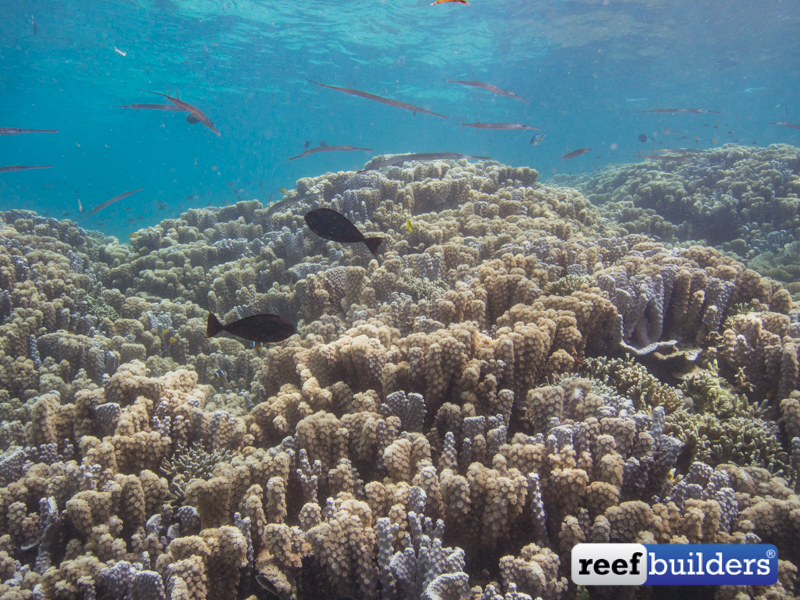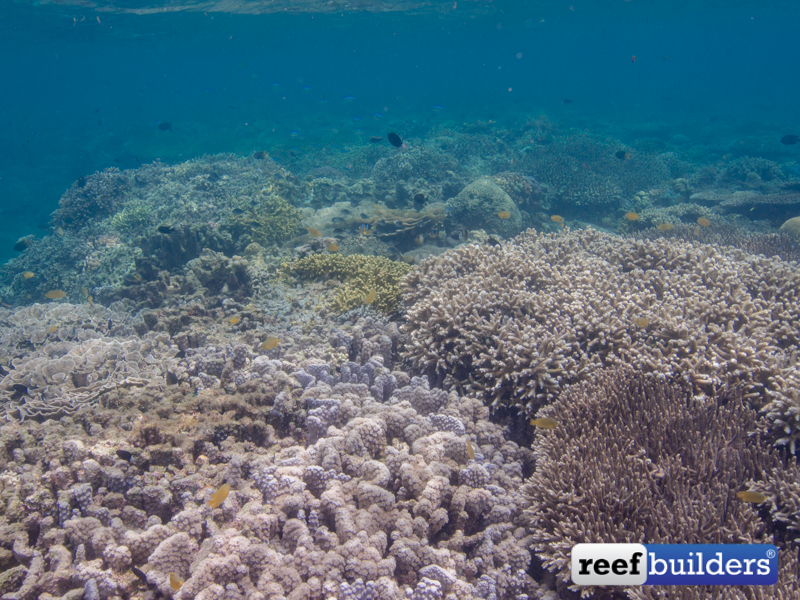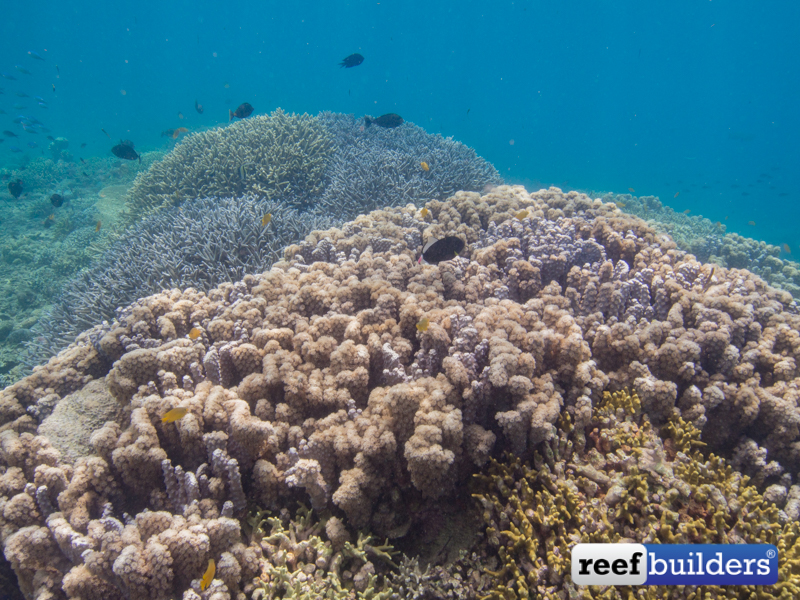Reef Builders blue is the best word I can use to describe the deep color you find while peering out from the Bunaken Wall. Countless sea turtles dart by, schools of pyramid butterfly fish, anthias, and triggerfish swim in synchrony along the reef wall, but what about the corals?
Wall diving is one of the more exhilarating feelings for a scuba diver especially the steep walls of Bunaken, but once you have your wits about you and the adrenaline of floating in the abyss has worn off, your eyes start to wander closer to the reef, ready for a coral spotting adventure.
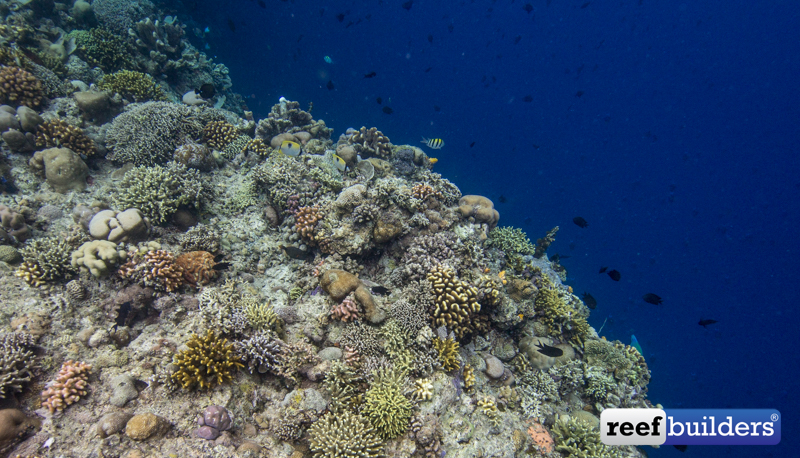
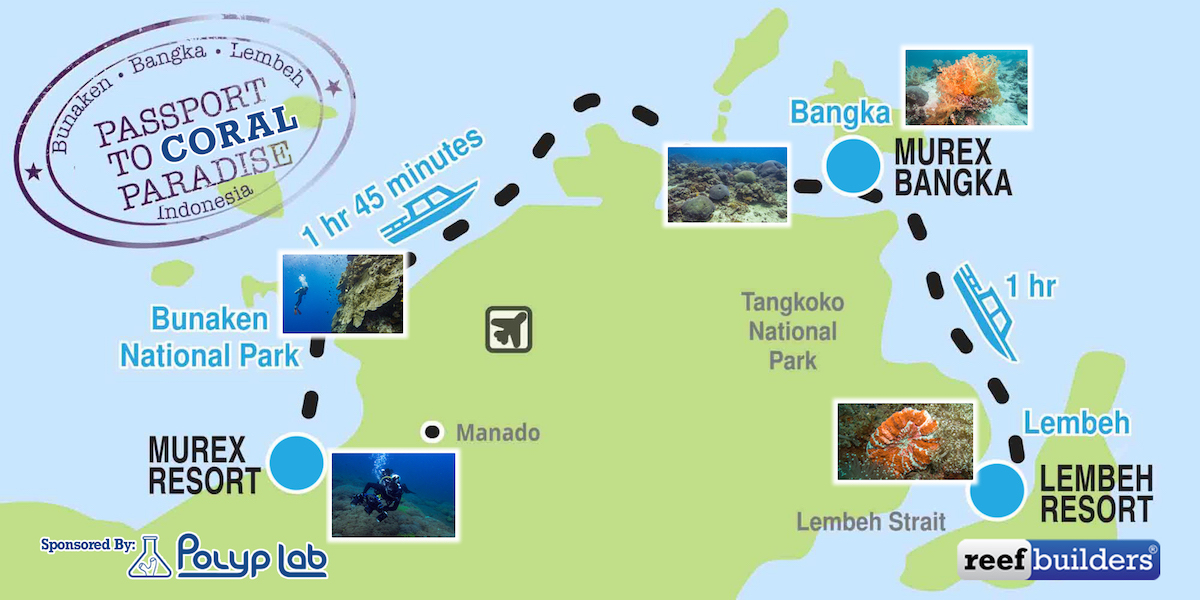 We headed back to Northern Sulawesi sponsored by Polyp Lab on a coral spotting expedition, to document coral reef habitats from the eyes of a coralholic.
We headed back to Northern Sulawesi sponsored by Polyp Lab on a coral spotting expedition, to document coral reef habitats from the eyes of a coralholic.
In last weeks article, I wrote about the diversity of coral habitats along the shores of Manado Bay, which has more gentle sloping reef habitats compared to the deep, steep walls of the Bunaken National Park. Bunaken National Park is the 2nd stop in our Passport to Coral Paradise trip around northern Sulawesi Indonesia.
Bunaken National Park
The Park and Bunaken Islands are approximately 18km out from the shore of Manado Bay.
The islands are more exposed to prevailing winds and current, compared to Manado Bay. This high energy habitat includes exhilarating drift dives on deep walls, and shallow reef flats between shore. Depending on the daily condition, many of these dives call for you to buckle up and enjoy the ride as drift swiftly along the reef wall.
When observing coral species that occupy this particular reef habitat it’s clear that not all corals can tolerate this high energy condition. The reef tops are covered in hardy branching species like Isopora, Montipora, Hydnophora, and Porites, corals with strong branches that can withstand the current.
You will also find massive boulders Platygyra, Favia, Goniastreas, and Turbinarias, all with substantial skeletons to withstand this high flow, high light, and generally high energy environment.
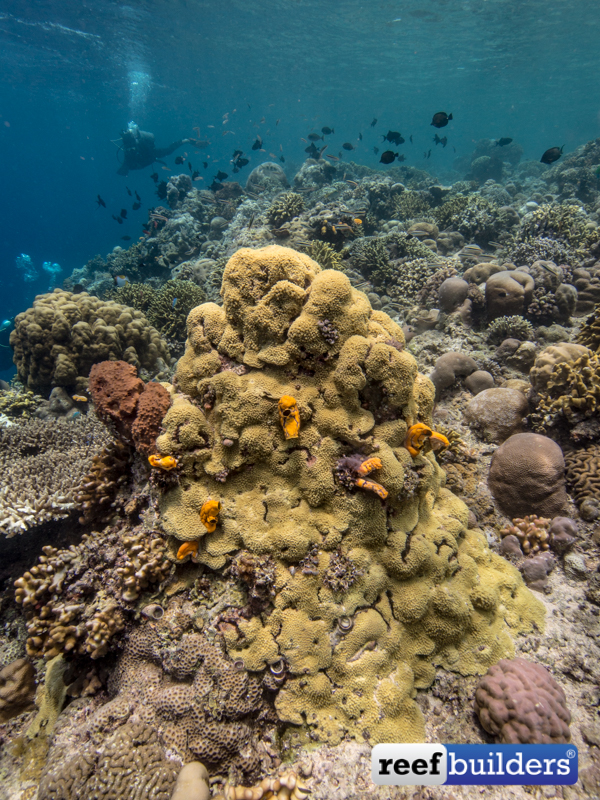 Try Mandolin wall, Bunaken Timur, and Jalan Masuk dive sites.
Try Mandolin wall, Bunaken Timur, and Jalan Masuk dive sites.
As you crest the reef flats, the reef drops almost vertically down, and light is absorbed quickly as you descend. Along the twists and corners of the wall, exist shady pockets. This includes nooks which are sheltered from the current, or high energy areas on the corners receiving some pretty swift moving flow.
It is common to find Montipora and Mycedium corals encrusting and plating along the wall where current is high. The corals plate outwards to capture more light, and found between 30 and 100 feet. In the nooks where light is less abundant, you find Pachyseris, and Leptoseris.
In some of the shadiest pockets you find Tubastrea, and different non-photosynthetic corals, a sigh these areas are often starved of light because of their orientation, rocky ledges or corals above causing shade.
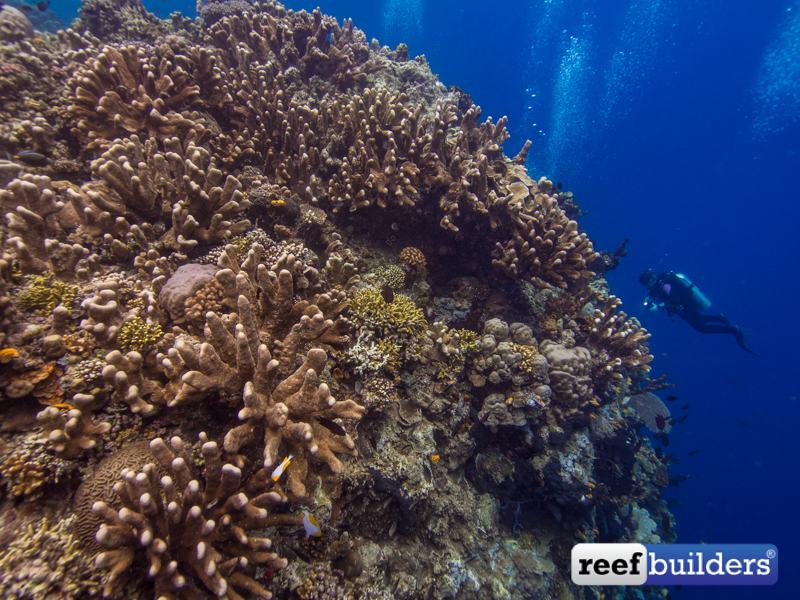
Fukui Point
For sure one of the most popular dive sites in Bunaken and hands down my favorite is Fukui Point. What’s interesting about this dive site is how the habitat differs from the rest of the reef walls. Here the reef tops are covered in branching Acropora creating a picturesque coral reefscape.
Fukui is great for snorkeling, diving and taking pictures as the shallow reef is full of light. Here you see a distribution of Acropora corals on the top of the reef, and plating species along the slope stretching out to capture more light.
I’ve written two in-depth pieces about this reef on my dive blog and you can check them out linked here. Fukui Point Part 1: Plating Coral, Part 2: Branching Coral.
Fukui has a shallow reef flat making a point at the corner of Bunaken Island with gradual slopes along either side of the point. The top of the point has a great diversity of Acropora and we’ve heard there have been over 50 Acropora species counted on this one site alone!
Along the edge of the point where the reef begins sloping down, there are some urchin shaped restoration substrated to fend off reef erosion. The urchin balls have been there for more than ten years and have hardy encrusting corals to cement and solidify the reef. The unique shape of the urchins helps dig into the soft sand and reduce rubble from tumbling down the slope toward the fragile plating corals.
When you drop into Fukui point the first place you will go is down the reef slope. You will quickly be met with layers of plating coral as far as the eye can see. At first glance, you might think all these corals are the same but there is a distinct line around 15m where one species ends and another begins. There are two dominant species Echinopora, and Mycedium, with a few patches where smaller colonies have carved a life on the reef.
If you want to try corals spotting in Bunaken don’t miss out on Fukui Point! This is a classic dive site, one your guides are sure to bring you whether you ask to go or not. The only difference is if you want to go coral spotting ask to spend more time exploring the top of the reef, rather than spending you times circumnavigation the reef wall.
You definitely want to leave at least 30 minutes to explore the top of Fukui point and make sure you find yourself all the way to the very point of the reef (away from the island) where there are huge colonies of Turbinaria peltata with a unique branching form, giant Astreopora and Porites boulders and the granddaddy of all creamy branching Pavona.
Next week we’re heading over to Bangka Island to explore the non-photosynthetic coral paradise around the island.
We want to thanks Murex Dive Resorts for showing us around Sulawesi and Polyp Lab for people a part of this expedition.


